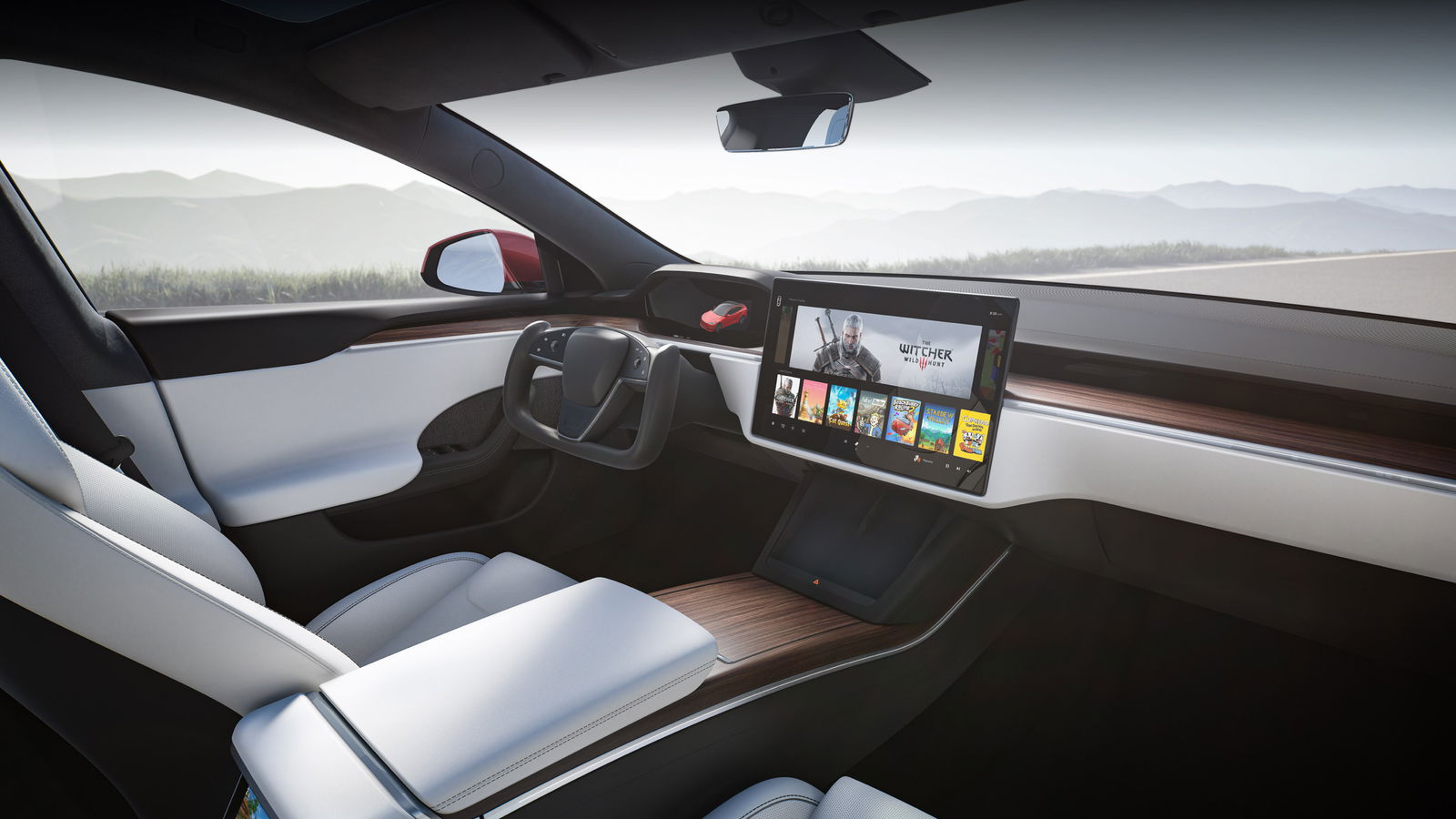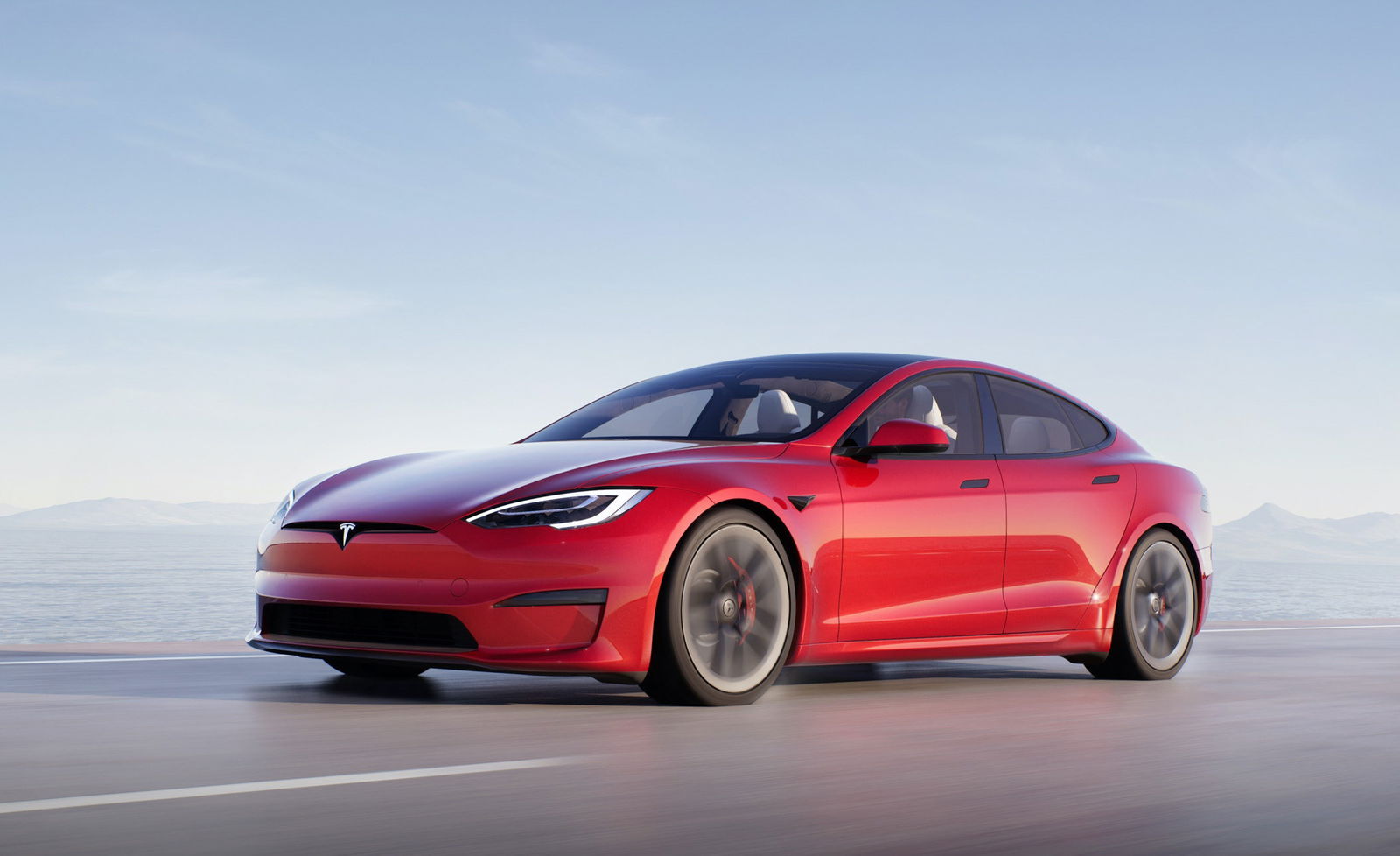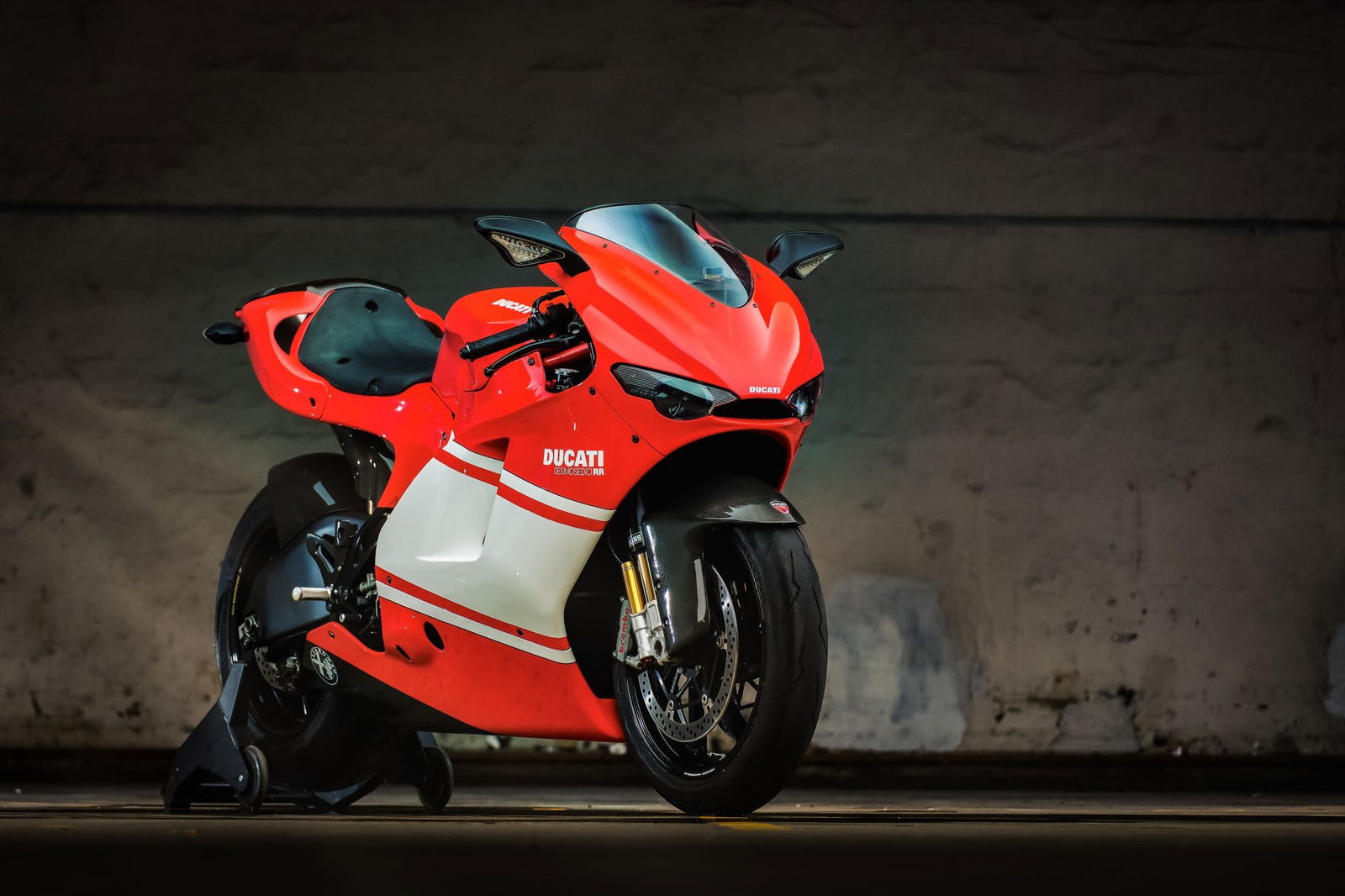Here's What It's Like To Use The Tesla Model S 'Yoke' IRL

You’d think the key takeaway from the reveal of the updated Tesla Model S earlier this year would have been the 1006bhp ‘Plaid’ powertrain, but no. Seemingly, all anyone could talk about was the yoke-style steering ‘wheel’ arrangement.
There were questions of safety and legality, and many pondered whether or not the whole thing was merely a publicity stunt. Tesla was being very serious, though, as the first deliveries of the updated Model S over the last few days have indeed involved yoke-equipped cars. That means there are already some videos kicking around of the rectangular steering thing being used out in the real world, including this four-minute-long effort from one owner.
Both Tesla CEO Elon Musk and the strange people on Twitter who think the company is beyond any sort of criticism are quick to point out that F1 cars have rectangular steering wheels. There are vehicles you can actually buy with such arrangements too, like the Radical SR10 we drove last year. It’s a flawed analogy, though, as cars like this have extremely direct steering ratios, and aren’t exactly the kind of thing you’ll use for navigating a tight supermarket car park.
Learn more about how rack and pinion steering works
The Model S, as far as we know, still has the same steering ratio as before. That means it’ll be about two and a half turns lock to lock. Sure enough, then, small and medium turns are shown to be no problem for the yoke, but once more lock is required, it looks rather awkward. The owner admits that some time after taking delivery of the car, he’s still getting used to it, and he’s even heard accidentally setting off the horn at one point.

A long adjustment period is going to be needed, and even after that, using the device will surely never be as easy as a conventional wheel. The advantages you’re getting in return are limited. There’s the way it looks (which not everyone will be a fan of anyway), and Musk has also noted that the design gives a clearer view of the instrument cluster. It seems odd to draw attention to this, though, since the Model 3 and Model Y don’t have a gauge cluster behind the wheel at all.
Like the partially predictive touchscreen gear selector and the ditching of indicator stalks for an automated system (thankfully overridable via steering wheel buttons), the yoke feels like a desperate attempt to appear disruptive. Other manufacturers are, at last, catching up to Tesla’s incredible powertrain advances, so to appear different from the herd, we now get gimmicks. Non-optional ones, too - the drive selector is on all cars, as far as we know, and it appears that there’s no option for a conventional steering wheel in the updated S. But hey, we’re sure some enterprising types out there are already working on a clip-on solution you can buy off eBay.

It’s still unclear if we’ll be getting the yoke in the UK - Tesla’s press team here never responded to our request for comment on the matter back in January. In terms of legality, it’s a bit of a grey area. There are no rules on the size or shape of a steering wheel for UK roads, but there is a bit of legislation that states the part cannot be designed in a way that could cause jewellery or clothing to get snagged when in use. The top parts of the yoke’s ‘U’ could fall foul of this.
In any case, it’ll be a while before we know what kind of steering device UK-bound cars get, with the first deliveries not taking place until some way into 2022 at the earliest.



Comments
How in the whole damn universe does the car know when I want to use my turn signal?